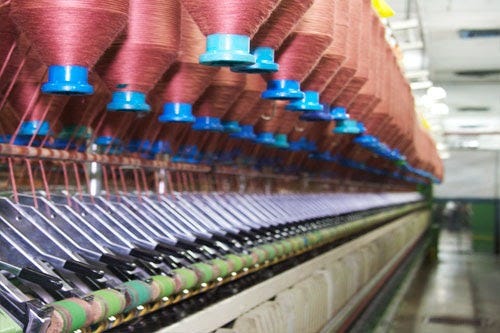India’s textile, apparel, fashion retail shows signs of recovery: Avendus Spark Report

The Indian textile, apparel, and fashion retail sector is on the path to recovery, albeit cautiously, says a new report by Avendus Spark. While the industry faces challenges, the report highlights positive trends and opportunities for growth.
Key findings
The report indicates a gradual rebound in the textile sector, with global retailers and brands reporting a return to pre-COVID inventory levels. This is a positive sign for Indian exporters, who have witnessed an increase in order books. However, the report also emphasizes a cautious outlook, as garment companies await a sustained uptick in order momentum.
Cotton spinners’ gain
The industry has shown signs of recovery, with cotton spinners benefiting from decreased global cotton prices. This has led to increased volume sales, although overall growth was tempered by a decline in yarn prices. The report predicts that value growth will soon align with volume growth as cotton prices stabilize. Additionally, the home textile sector has performed well, with a 16 per cent value growth in the last quarter.
MMSF face headwinds
The report also explores the challenges faced by the Man-Made Staple Fibers (MMSF) segment. While MMSF players saw a modest 5 per cent year-on-year revenue growth, they are grappling with pricing pressures due to cheaper imports from countries like China and Bangladesh. Capacity constraints further limit volume growth opportunities. However, the report also highlights the potential for future growth. "Several companies are planning to expand capacity in the coming quarters," the Avendus Spark report notes. "The Production Linked Incentive (PLI) scheme by the government is expected to incentivize further investments in MMSF yarn production, boosting the segment's long-term prospects."
Apparel sector moves cautiously
While the sector is recovering, order cycles are still shorter than usual, indicating cautious optimism among garment manufacturers. The report highlights the potential impact of the Production Linked Incentive (PLI) scheme in encouraging investments in Man-Made Staple Fiber (MMSF) yarn production.
Growing brand play in women’s fashion retail
The report delves into the women's apparel market, which is valued at Rs 1 trillion and growing at an 11 per cent annual rate. The shift towards branded apparel is even more pronounced, growing at around 20 per cent per year. This trend is driven by increasing female workforce participation, rising disposable incomes, and evolving consumer preferences.
However, despite the positive trends, the industry faces several challenges, including pricing pressures due to cheaper imports from countries like China and Bangladesh. Capacity constraints have also limited growth opportunities for MMSF players. The report also identifies several opportunities. The growing middle class, increasing disposable incomes, and changing consumer preferences are driving demand for branded and fashion-forward apparel. Moreover, the government's focus on textile and apparel exports through initiatives like the PLI scheme offers potential for growth.
The Avendus Spark report provides valuable insights into the current state of the Indian textile, apparel, and fashion retail sector. While challenges persist, the industry is showing signs of recovery, driven by factors such as increased exports, growing domestic demand, and supportive government policies. As the sector continues to evolve, businesses will need to adapt to changing consumer preferences, invest in technology, and focus on sustainability to achieve long-term success.
